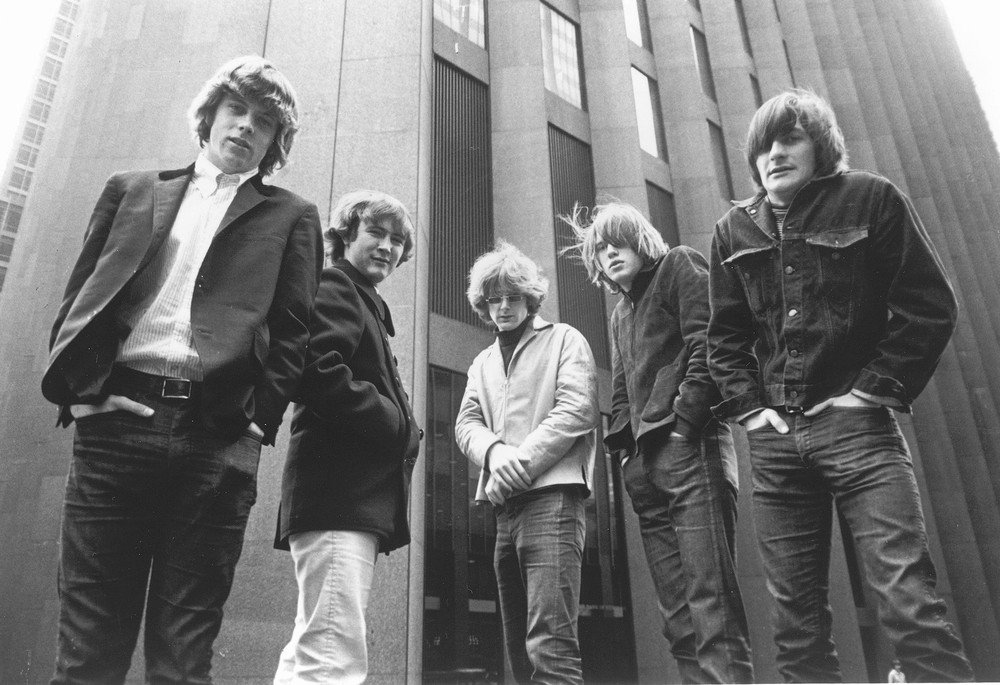The Byrds: Trying to catch the worm in the wake of Beatlemania
It may be difficult to determine the most competitive era for bands to have debuted in, but American acts emerging after Chuck Berry and Elvis, but right before the British Invasion, faced a serious challenge in their fight for fame.
After the birth of rock ‘n’ roll in the states and a very fruitful 50s, the eyes of the music industry looked across the water, where a new wave of rock ‘n’ roll was brewing in the UK. The USA had their time in the spotlight, and with the new decade, the industry said, “what’s next?”.
Where the blues genre drove the influences of Britain’s rock ‘n’ roll youth, California based The Byrds planted themselves from a roots foundation, pioneering early folk and psychedelic rock. Like many bands of the 60s, the band’s original formation only enjoyed a few years of success as a collective, yet had a significant impact in shaping some of the many streams of rock ‘n roll.
Composed of Roger McGuinn, Gene Clark, David Crosby, Chris Hillman and Michael Clarke, the Byrds formed in 1964, when Beatlemania hadn’t fully hit international waters, but had been introduced to McGuinn and Clark. The duo were warmly influenced by the fab four, having performed acoustic covers as a duo act, before approaching new ways to innovate rock and roll as The Byrds. Evidently appreciative of the fellow youngblood bands seeping in from across the Atlantic, the quintet may not have been fully aware of the power of the incoming ripple of English bands about to steal the industry’s limelight.
Combining Bob Dylan-esque folk with rock and roll, the blend was an appealing offer that balanced the foundations set by preceding American acts, with the evolving contemporary style coming from Europe. In August 1964, producer and manager Jim Dickinson offered the Byrds an opportunity to record an unreleased track of Dylan’s: “Mr Tambourine Man”. Supposedly unimpressed with the single at first, the band’s rock arrangement ended up being praised by Dylan himself - a needed boost of confidence for the group. Settling into their musical direction, the band approached new tools to evolve their sound, resulting in their characteristic use of the Rickenbacker twelve-string guitar and tambourine. In November of that year, the band was signed to Columbia Records.
January 1965 saw their Dylan rendition be recorded as a debut single (released in April), and work on their debut album began two months later. Soon becoming a must-see act in LA’s nightlife scene, the band were growing a following of folk-focused fans with a curiosity into electronic rock and roll. Combining a mix of crisp harmonies and unison vocals with a compressed, bright guitar tone, the band were also noted for their intellectual and literary wordplay, which has dubbed them developers of songwriting in rock and roll.
The title track of the band’s debut album, the “Mr Tambourine Man” LP was released in June 1965, helping to initiate a year long folk-rock boom. Believed by critic William Ruhlmann to have influenced acts such as the Turtles, the Leaves and Sonny & Cher, their sound is said to also have seeped into the Beatles’ “Rubber Souls” album, which was released that December.
By 1966 however, the Byrds were moving on and exploring a more psychedelic rock sound, releasing original single, “Eight Miles High” through Columbia (who forced them to re-record the single after they had already recorded a version at RCA studios). Today noted to be one of the first psychedelic rock songs, and admirably experimental in its nod to Indian classical influences, the release was not an instant success at the time. Banned by many US stations on the grounds of it supporting “recreational drug use”, the single peaked at number 14 in the US, and did not crack the top 20 in the UK.
By this point, Gene Clark had exited the band. Like Alan Price of the Animals, the vocalist had a fear of flying, which contributed to anxiety and isolation within the group. The band continued on, and remained somewhat of a healthy creative competitor for The Beatles, but they could not outshine the dazzling golden boys from Liverpool. The high-profile departure of Clark was a big loss for the band, though they continued to release albums until disputes resulted in more line-up changes. The Byrds were quickly long gone in an original sense, and future assortments of members experienced bouts of highs and lows. The Clarence White era is considered the final official era of The Byrds, who called it a day in early 1973.
Between doubtful management, critical press, and an aloof and erratic band character, The Byrds were arguably, not a recipe for success in the wake of the British Invasion. Though pioneering in their own right, their career could not see them overtake the charming lads from Liverpool, whose charisma and collaborative spirit as a band achieved them an unparalleled level of worldwide fame. However, as we’ve had almost sixty years to digest the British Invasion, the wider music world can appreciate how both bands played-off each other’s musical trademarks, with the two acts historically presented as integral parts of the music industry’s changing landscape.
Cobra Promotions is proudly affiliated with DROP ROCKET




More fantastic Irish and irish-based folk artists combining trad, pop and rock elements into their sound.